How to Catch Monster Crabs in the Wildwoods
Each year, the Wildwood Video Archive crew gears up for one of our favorite summer traditions: the annual meeting of the Contino Crabbing Commission.
It’s a serious (but not-so-serious) showdown where we rent pontoon boats from Pier 47 Marina and head out into the peaceful back bays of the Wildwoods, New Jersey.
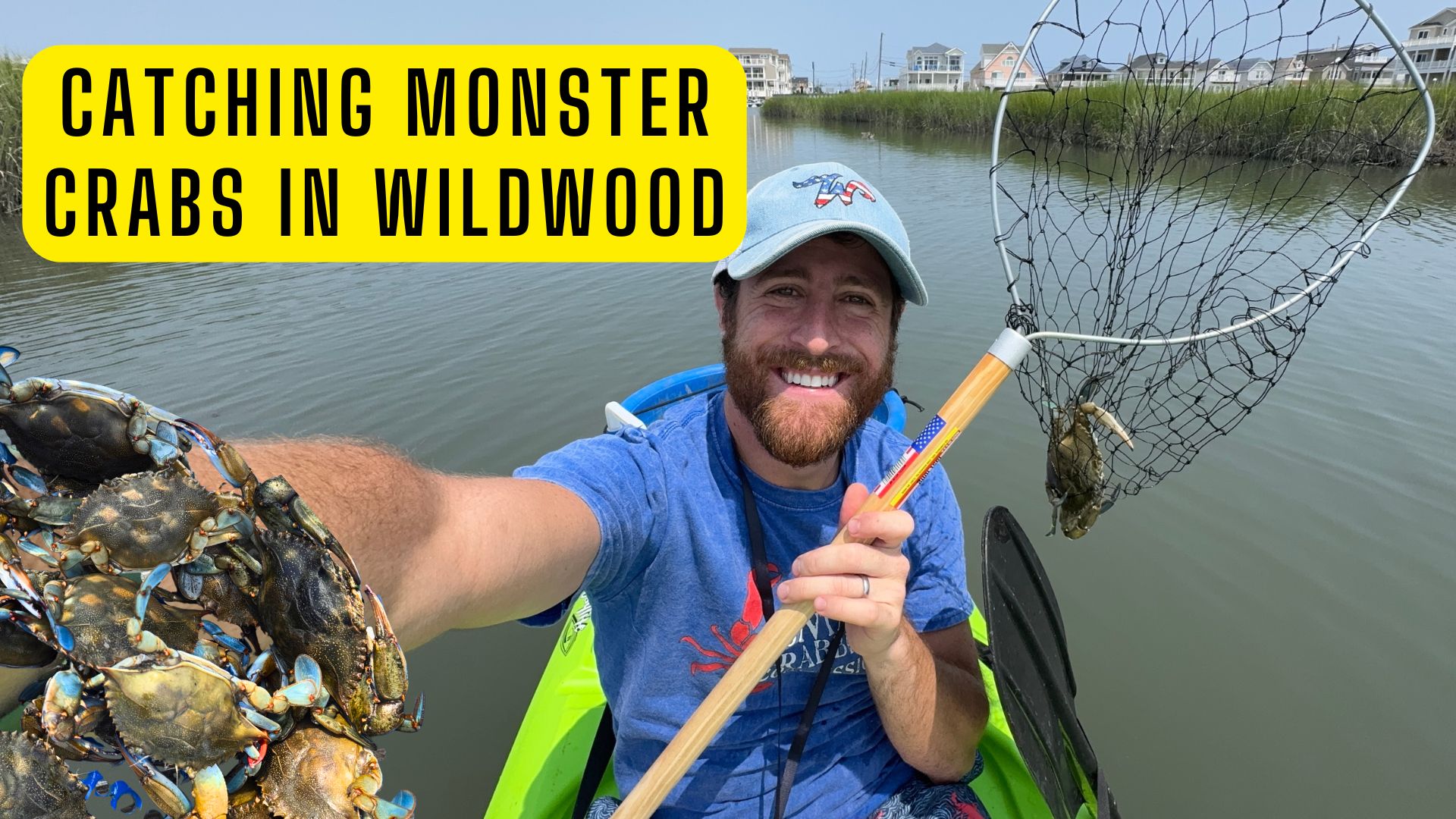
Kayak Crabbing in the Wildwoods
The mission? Catch as many blue claw crabs as possible within four hours. At the end, one lucky crabber is crowned champion and awarded the coveted Golden Crab Trophy, a title they proudly hold for an entire year.
Yes, this is a real thing. We actually do this every summer with crab nets, goofy trash talk, a golden trophy, and plenty of laughs.
There’s something truly magical about drifting through those quiet back bay waters just after sunrise. The only sounds are birds overhead and the splashes of crabs hiding below the surface.
It’s a Jersey Shore crabbing tradition that has been passed down through generations. I first experienced it with my grandfather, and now I carry it on each year.
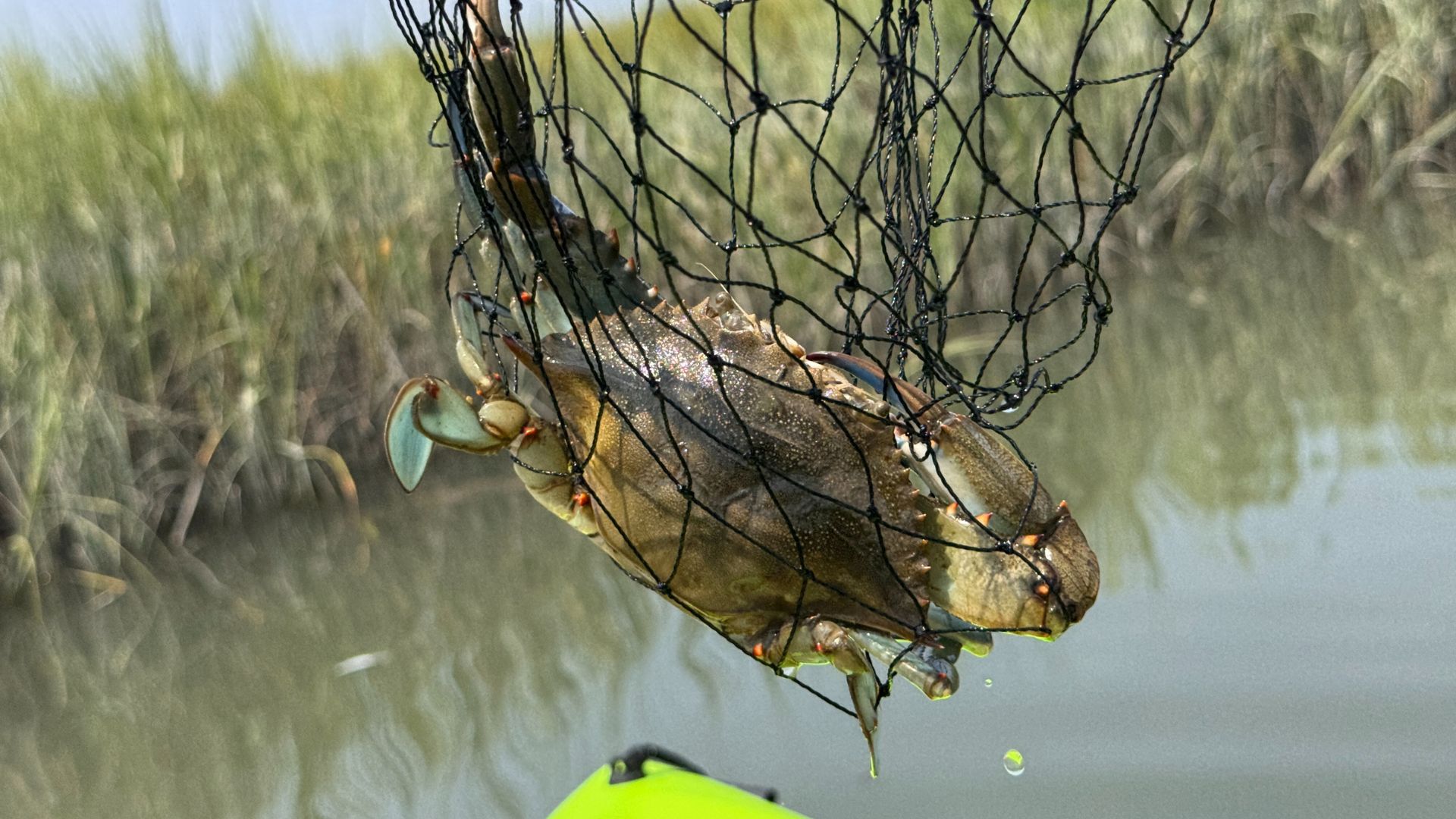
Everyone swears their technique is the best, and half the fun is the debate while waiting for the next big haul.
What makes this annual crabbing trip even more special is the location.
The back bays of the Wildwoods are a hidden gem, full of winding tidal creeks, quiet marshlands, and postcard-worthy views that feel frozen in time.
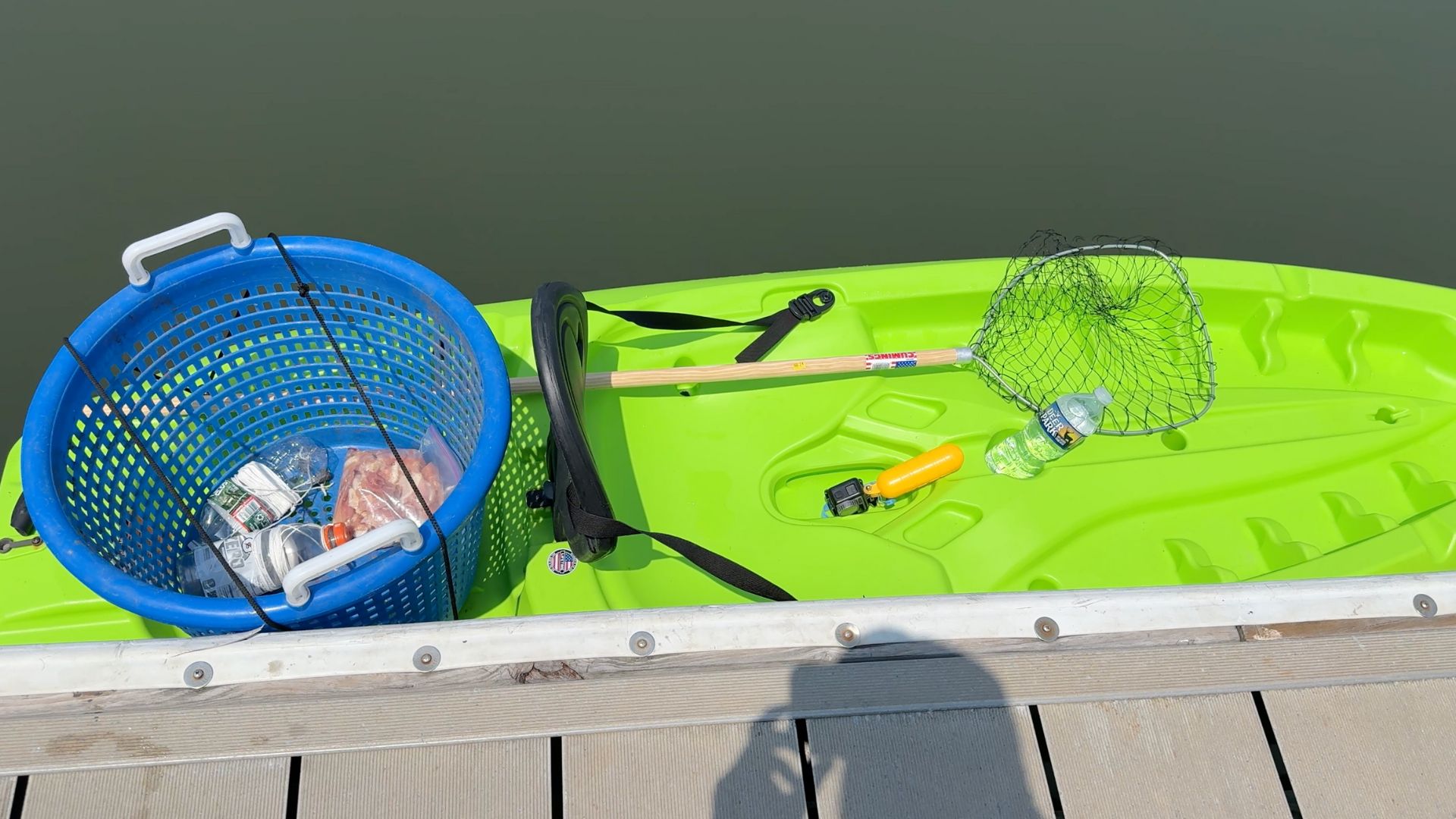
This year, with everyone’s schedules packed, I decided to go crabbing solo with a twist.
Also See: AirFest 2025 Brings the First Jet Fighter in History to Cape May Airport
Instead of using a pontoon boat, I grabbed my kayak and paddled into the same scenic back bays.
Kayak crabbing in New Jersey is a completely different experience.
It’s quieter, more personal, and lets you explore small, narrow creeks that boats simply can’t access. And that’s where the big crabs hide.
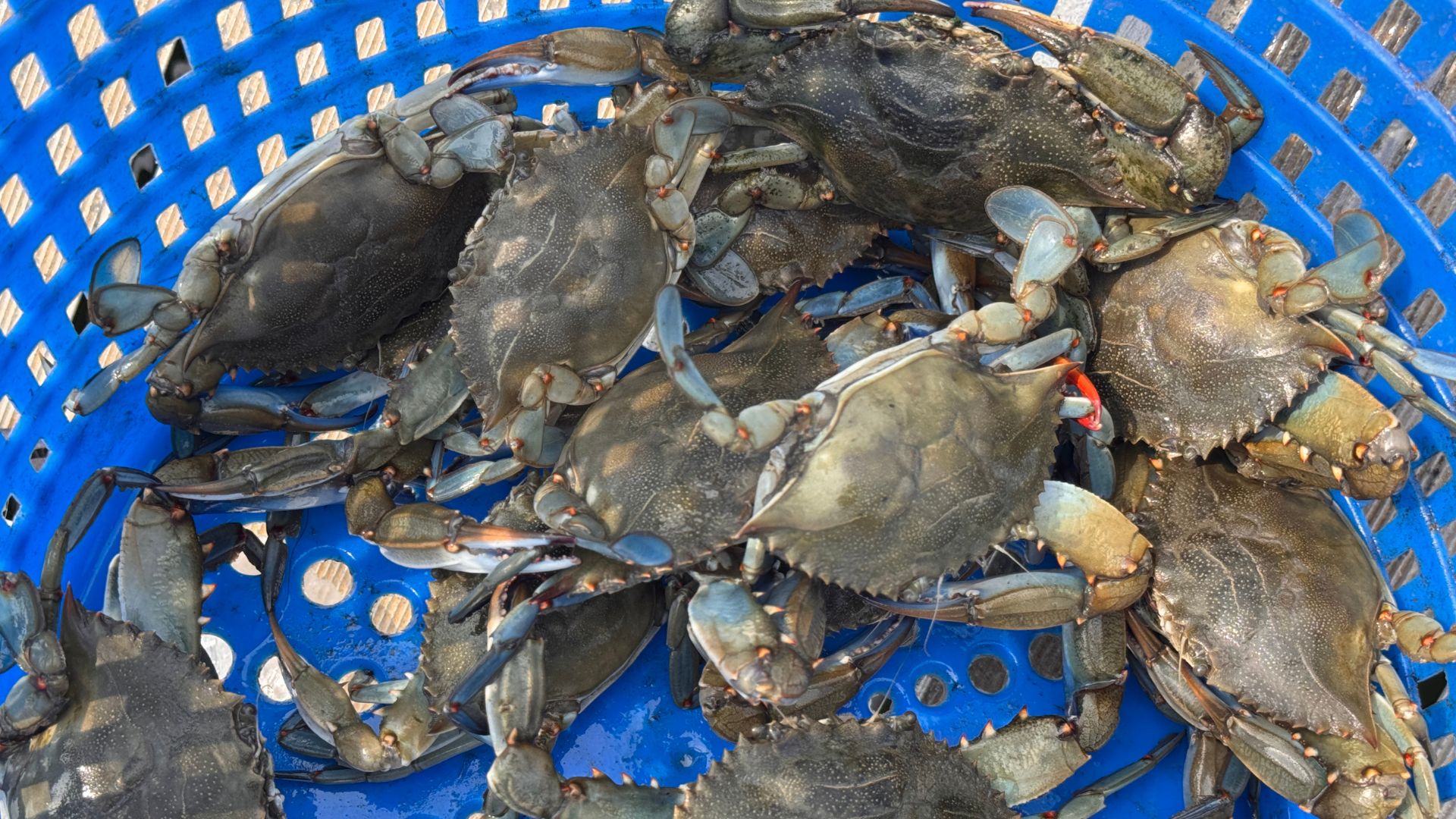
This time, I used chicken for bait. It wasn’t my first choice, but I couldn’t make it to the bait shop for bunker. Spoiler alert: it worked like a charm.
Let’s break down all the rules for Crabbing in the State of New Jersey
If you’re using hand lines, manually operated collapsible traps, or scoop nets, you do not need a license. However, if you plan to use up to two non-collapsible Chesapeake-style crab pots or two trot lines, a non-commercial crab pot/trot-line license is required, which only costs $2.
Regardless of your gear, the daily catch limit is one bushel per person, and size regulations must be followed: peeler crabs must be at least 3 inches, soft crabs 3.5 inches, and hard crabs 4.5 inches across the shell.
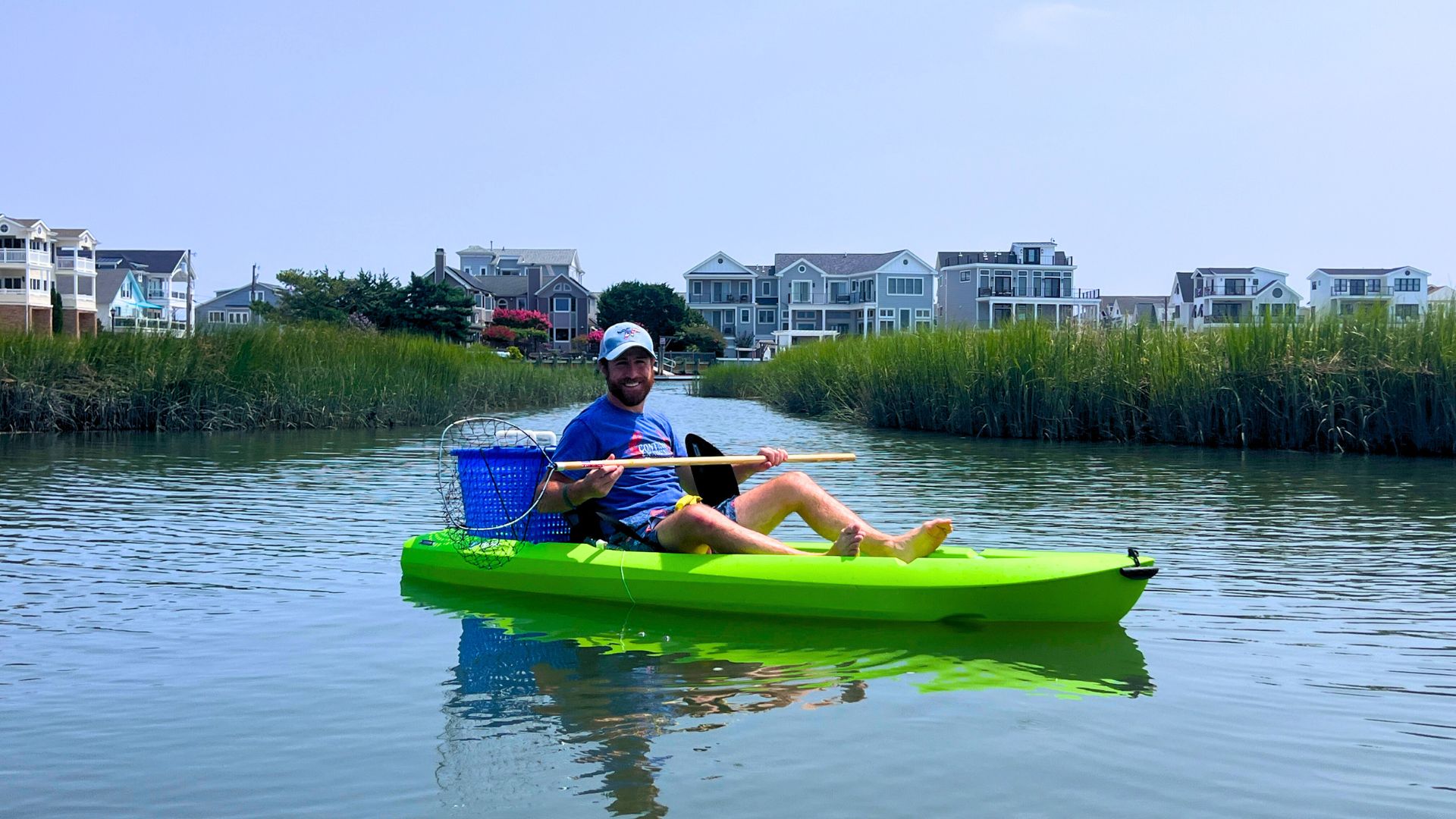
For those using pots or trot lines, your gear must be properly marked with your 9-digit CID number, tended at least once every 72 hours, and not obstruct navigation or be placed in creeks narrower than 50 feet.
Floating lines are not allowed on buoys or pots.
Crabbing with pots or trot lines is permitted from April 6 to December 4 in Delaware Bay and its tributaries, and from March 15 to November 30 in all other state waters.
For best results, go during the warmer months and around high tide.
Check out the video below to see the full trip and learn all of my kayak crabbing tips and tricks for the Jersey Shore.
And before you watch, be sure to subscribe to my YouTube channel for more adventures in Wildwood, NJ, and beyond!
